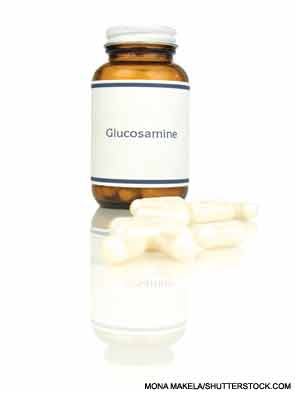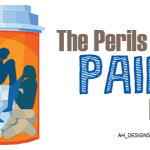
Pipeline and Drug Approvals
In early May, the Food and Drug Administration (FDA) approved canakinumab (Ilaris) for the treatment of active systemic juvenile idiopathic arthritis (SJIA) in patients two years of age and older.1 Canakinumab is the first interleukin 1 beta (IL-1 beta) inhibitor approved to treat SJIA. It is given as a once-monthly subcutaneous injection of 4 mg/kg up to 300 mg. Two pivotal clinical trials were conducted in two- to 19-year-olds. In the first study, 84% of patients treated with one subcutaneous dose achieved the primary endpoint of the adapted pediatric ACR30 versus 10% of placebo-treated patients at Day 15. In the open-label part of the second study, 92 of 128 patients attempted corticosteroid tapering. Of these patients, 46% were able to completely discontinue corticosteroids, and 62% substantially reduced their use. In the controlled part of the second study (n=177), there was a 64% relative reduction in the risk of flare for patients in the active treatment group compared to placebo-treated patients. Potential side effects include infection, cold symptoms, upper respiratory infection, runny nose, sore throat, nausea, vomiting, diarrhea, stomach pain, and injection site reactions. Like similar cytokine agents, patients must be tested for tuberculosis prior to treatment. In March, the European Commission approved this agent for treating adults with acute gouty arthritis who have frequent attacks and whose symptoms cannot or should not be managed with currently available treatments. For acute gouty arthritis, canakinumab was administered as a single, 150-mg subcutaneous injection.
Candesartan cilexetil tablets (Atacand) are now available generically. The FDA approved this angiotensin receptor blocker for marketing approval on May 22.2 The only other generic angiotensin receptor blocker is currently losartan. Valsartan (Diovan) monotherapy will likely be approved next.
Rabeprazole sprinkle delayed-release capsules (Aciphex) have been approved FDA for the treatment of gastroesophageal reflux disease (GERD) in children 1 to 11 years of age for up to 12 weeks.3 A total of 127 pediatric patients with endoscopically proven GERD were studied in a double-blind, parallel-group manner. Treatment emergent adverse effects included vomiting (14%), cough (14%), abdominal pain (12%), diarrhea (11%), pyrexia (10%), headache (9%), upper respiratory infection (8%), oropharyngeal pain (6%), and nasopharyngitis (5%). Similar effects were seen in a 24-week extension period. The capsules will be available in 5-mg and 10-mg strengths.
At the end of March, tocilizumab (Actemra) received marketing approval from Japanese regulators for a subcutaneous product formulation to treat rheumatoid arthritis (RA).4 In a phase III clinical trial, the subcutaneous formulation demonstrated noninferiority to the intravenous (IV) formulation, and the safety profile of both formulations were similar. The IV formulation is currently the only formulation approved in the U.S.; the subcutaneous formulation was been submitted to both U.S. and European regulators in December.
Drug Information
Gruer et al published their results of treating men with glucocorticoid-induced osteoporosis (n=92).5 In this 18-month, randomized, open-label, active comparator–controlled study, patients received either daily 20 micrograms subcutaneous teriparatide (n=45) or weekly 35 mg risedronate (n=47). Lumbar spine volumetric bone mineral density (BMD) measured by quantitative computed tomography (QCT) was the primary objective. QCT was measured at baseline and Months 6 and 18. The mean patient age was 56 years old. Patients also received one gram of elemental calcium and 800 to 1,200 international units of vitamin D daily. Trabecular BMD increased significantly greater for teriparatide (16.3%) versus risedronate (3.7%). Vertebral strength increases at 18 months were significantly greater for both agents, increasing from 4.2% to 6.7% for risedronate and 26% to 34% for teriparatide. Adverse events were similar between the two groups. New clinical fractures developed in five risedronate-treated patients compared to no teriparatide-treated patients.
Safety
Glucosamine supplements may be linked to ocular hypertension. Murphy et al conducted a small (n=17) retrospective study of patients who utilized oral glucosamine supplements, and also had ocular hypertension (e.g., an intraocular pressure (IOP) greater than 21 mm Hg) or a diagnosis of open-angle glaucoma.6 Eleven patients (Cohort A) had baseline IOPs measured one to three times prior to oral glucosamine supplementation, and six patients (Cohort B) had no prior measurements of IOP prior to starting oral glucosamine. Patients in cohort A had significant IOP increases from before glucosamine supplementation to during supplementation, which decreased following discontinuation of the supplement. For patients in Cohort B, IOP significantly decreased after the supplement was discontinued. The study had limitations; however, the authors believe that this IOP elevation with glucosamine supplementation requires further exploration and that patients who choose to utilize glucosamine supplements should have their IOP routinely measured.
The FDA has approved label changes for zolpidem (Ambien, Ambien CR, Edluar, Zolpimist) products.7 These new dosing recommendations are related to the known risk of next-morning impairment related to zolpidem use. The Warnings and Precautions section of product labeling was also updated for patients who take zolpidem extended-release in either the lower 6.25-mg dose or the higher 12.5-mg dose, warning them not drive or participate in activities that require complete mental alertness the day after taking zolpidem. This is because zolpidem is still at a high enough level the following day to significantly impair performance of these activities. Also included in the label updates are the dosing recommendations previously stated in the FDA’s January 2013 Drug Safety Communication, which were reported in the March 2013 issue’s “Drug Updates”.
Michele Kaufman is a freelance medical writer based in New York City, a pharmacist at New York Downtown Hospital, and adjunct faculty at Touro College of Pharmacy.
Practical Optoid Use
At the recent American Pain Society meeting, held May 8–11 in New Orleans, Jennifer Erensen, MPH, and colleagues reviewed opioid conversion recommendations from select clinical practice guidelines and found that they are not all equal when dosing for nonmalignant chronic pain.8 In their abstract (#193), the authors noted conflicting information with substantial variability for opioid conversion. There was no uniformly accepted conversion ratio, with overestimations of equianalgesic doses. Other identified concerns included a failure to consider pain trajectory, use of concomitant medications, patient comorbidities, and interpatient differences. Most of the national guidelines that were evaluated did not address supplemental analgesia for breakthrough pain.
Additionally, the recommendations of the five state and four national guidelines evaluated were based on review articles, case studies, expert opinions, and clinical studies. Most of the studies used to develop the guidelines were not well controlled, were short term, were single-dose studies, and had fewer than 30 enrolled patients.
Prior to this research, a group of pain management experts known as Practical Pain Management (PPM) launched an online patient and professional education portal. They offer current, straightforward, and practical information for patients with chronic pain and medical professionals. All different pain types are discussed, as is current research. Their online opioid calculator is available free at http://opioidcalculator.practicalpainmanagement.com. To make the calculator, PPM asked three leading pain experts to develop their “ideal” opioid conversion calculator using the latest medical evidence. The authors state that this tool can safely and accurately calculate appropriate opioid doses for either opioid-naive patients or for switching patients to different agents.9
References
- Novartis drug Ilaris approved by FDA to treat active systemic juvenile idiopathic arthritis, a serious form of childhood arthritis. Published May 10, 2013. Available at www.pharma.us.novartis.com/newsroom/press releases/Ilaris05102013.shtml. Accessed May 26, 2013.
- Sandoz product website. www.us.sandoz.com/our_products/us_product_launches.shtml. Accessed May 31, 2013.
- FDA approves ACIPHEX Sprinkle (rabeprazole sodium) for use in children Ages 1 to 11. Published March 26, 2013. Available at http://us.eisai.com/view_press_release.asp?ID=147&press=396. Accessed March 29, 2013.
- Dennis M. Japan clears subcutaneous formulation of Roche’s Actemra. Published March 25, 2013. Available at www.firstwordpharma.com/node/1067111. Accessed May 25, 2013.
- Glüer C, Marin F, Ringe JD, et al. Comparative effects of teriparatide and risedronate in glucocorticoid-induced osteoporosis in men: 18-month results of the EuroGIOPs Trial. JBMR. 2013;28:1355-1368.
- Murphy RK, Ketzler L, Rice RDE, Johnson SM, Doss MS, Jaccoma EH. Oral glucosamine supplements as a possible ocular hypertensive agent. JAMA Ophthalmol. May 23, 2013 [Epub ahead of print].
- FDA Drug Safety Communication: FDA approves label changes for zolpidem products, including new dosing and a recommendation to avoid driving the day after Ambien CR use. Published May 14, 2013. Available at www.fda.gov/Drugs/DrugSafety/ucm352085.htm. Accessed May 15, 2013.
- Susman E. Wide variation in guidance for opioid dosing. Published May 12, 2013. Available at www.medpage today.com/MeetingCoverage/APS/39070. Accessed June 5, 2013.
- PPM launches online opioid calculator. Published March 2012. Available at www.practicalpainmanagement.com/treatments/pharmacological/opioids/ppm-launches-online-opioid-calculator. Accessed May 26, 2013.

